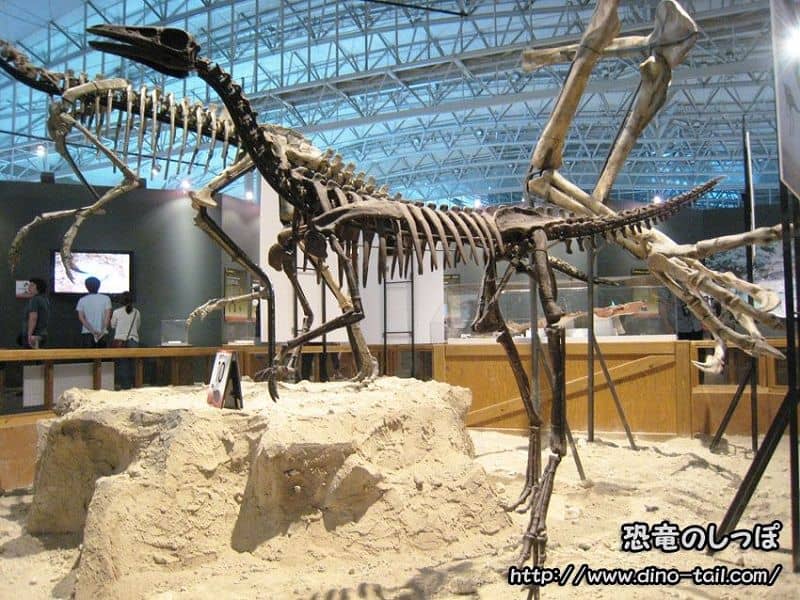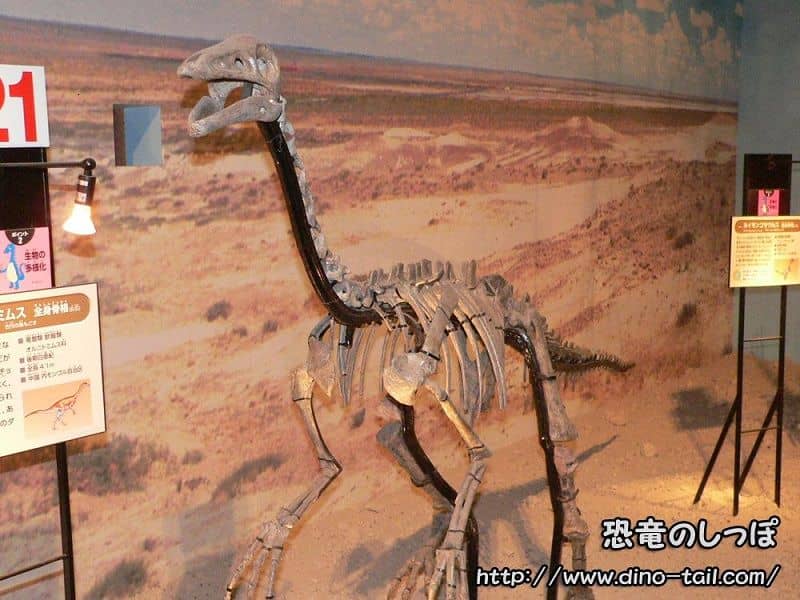About Archaeornithomimus
| Scientific Name (Genus) | Archaeornithomimus |
| Meaning of Name |
Ancient bird mimic
archaio (ancient) [Greek] - ornitho (bird) [Greek] - mīmos (mimic) [Greek] |
| Classification | Saurischia, Theropoda, Ornithomimosauria |
| Total Length | Approx. 3.3m |
| Diet | Omnivorous |
| Period | Late Cretaceous (approx. 95 million years ago) |
| Species Name | Archaeornithomimus asiaticus |
| Year of Paper Publication | 1972 |
| Genus Name Publication | Russell, D. A. (1972). Ostrich dinosaurs from the Late Cretaceous of Western Canada. Canadian Journal of Earth Sciences 9. |
The Mysterious "Doubtful Name" Ostrich Dinosaur
Archaeornithomimus was an ostrich-like dinosaur that lived in what is now the Inner Mongolia region of China during the Late Cretaceous. It is estimated to have been about 3 meters long and weighed around 50 kg. With large eyes, a toothless beak, a long neck, and long legs, it is thought to have been a swift runner. It was likely an omnivore with a generalist diet, feeding on plants, insects, and small animals like lizards.
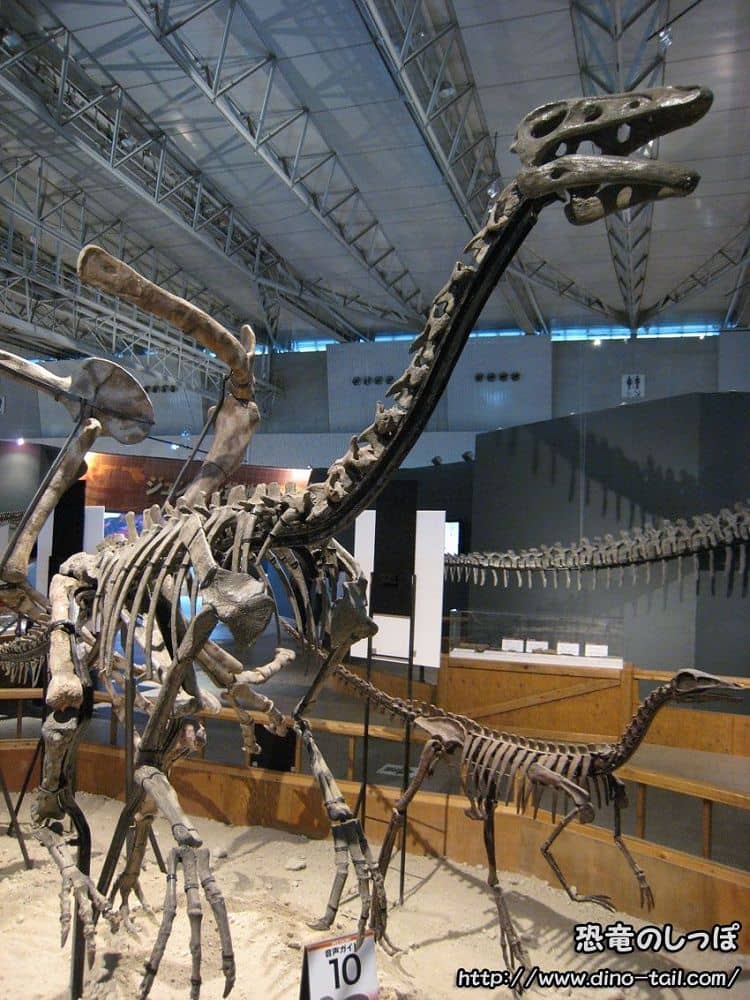
The fossils of Archaeornithomimus are very fragmentary, consisting only of parts like foot bones and vertebrae. Because of this, it lacks distinct features that can clearly differentiate it from other ornithomimid dinosaurs. As a result, many paleontologists question whether this genus is a valid taxonomic group. Such a scientific name is called a *nomen dubium* (doubtful name), and the discovery of more complete fossils is needed for clarification.
The Iren Dabasu Formation, where the fossils were found, was a lush floodplain with rivers and lakes at the time. This environment was home to a wide variety of dinosaurs, including the giant ornithomimid Gigantoraptor, hadrosaurids, and tyrannosaurids.
Publication and Classification History
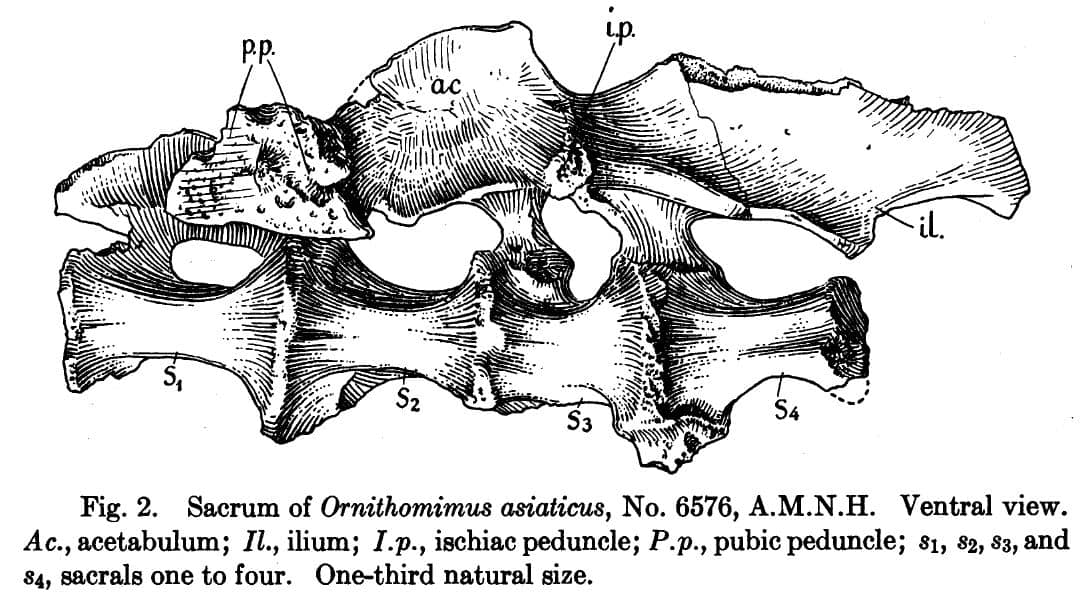
Source: Gilmore, C. W. (1933). On the dinosaurian fauna of the Iren Dabasu Formation. Bulletin of the AMNH.
Fossils discovered in the Inner Mongolia region in 1923 were described in 1933 by paleontologist Charles Whitney Gilmore as a new species of Ornithomimus, *Ornithomimus asiaticus*. However, subsequent research revealed that it had different features from the North American Ornithomimus, and in 1972, Dale Russell reclassified it as the new genus Archaeornithomimus. The genus name Archaeornithomimus means "ancient (Archae) bird mimic (ornithomimus)".
At one time, fossils found in Uzbekistan were thought to be a second species of Archaeornithomimus, but later research showed that these fossils belonged to a completely different group, the ankylosaurs (armored dinosaurs), and were given the new name Bissektipelta. This is a prime example of the difficulty in accurately classifying dinosaurs from fragmentary fossils.
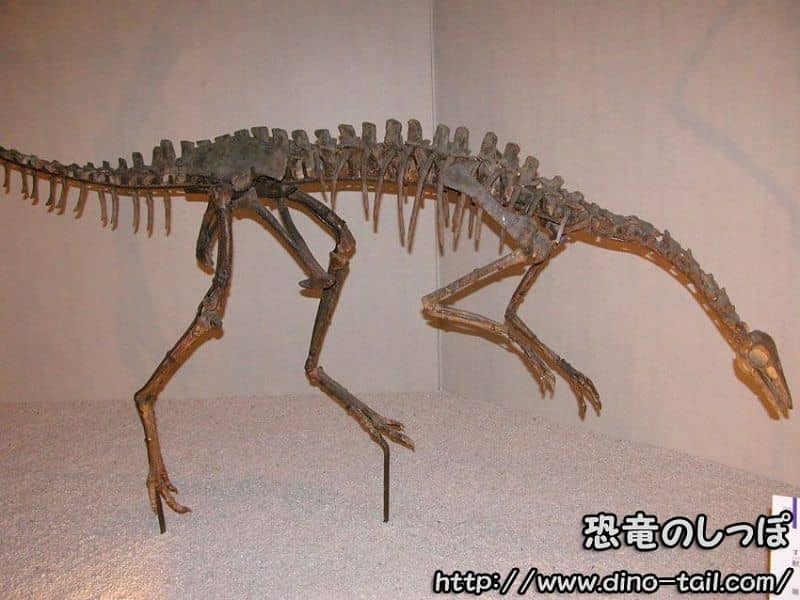
In the early 1900s, the classification of dinosaurs belonging to the Ornithomimidae family was very difficult and confusing. The Ornithomimidae family itself was classified under the infraorder Megalosauroidea in 1890, but as the diversity of theropods became clearer, it was reclassified under the infraorder Coelurosauria in 1976.
Archaeornithomimus Fossil Gallery
